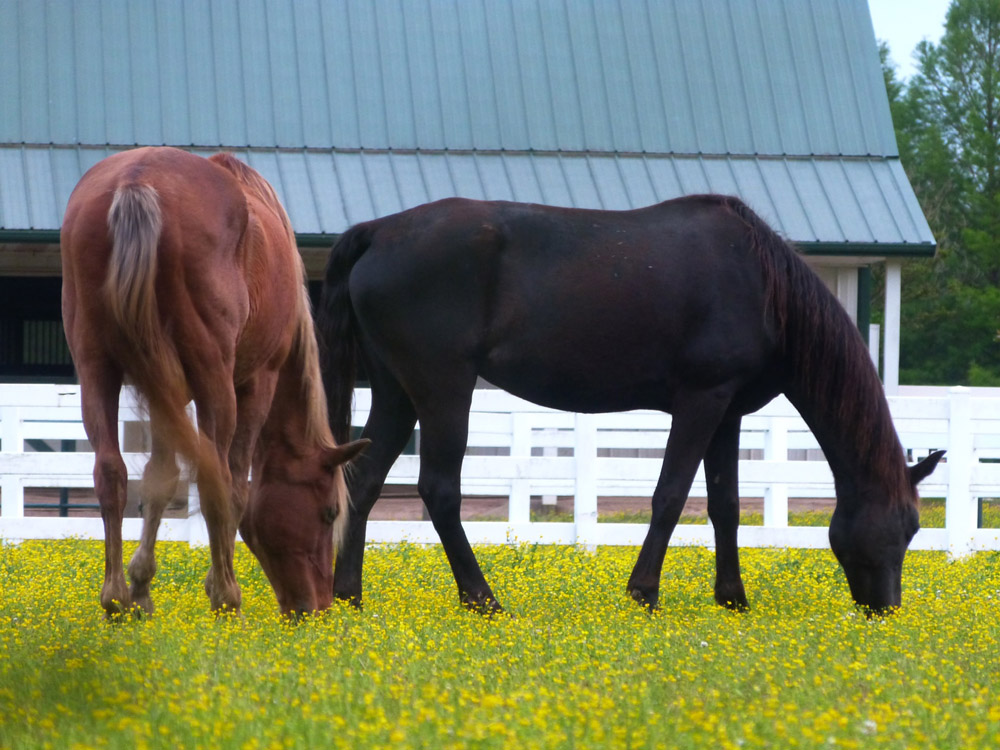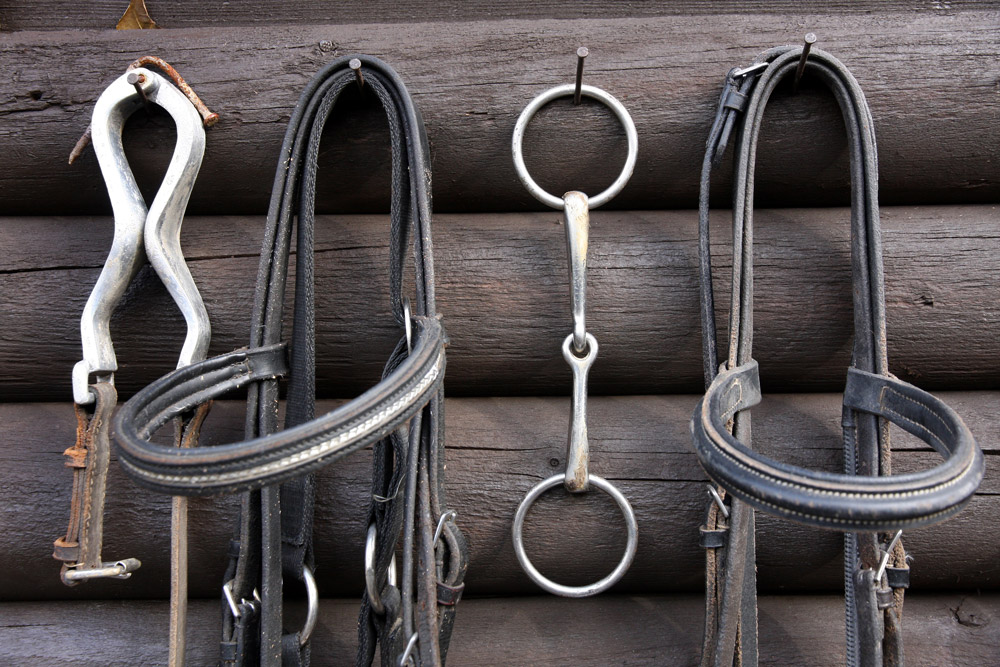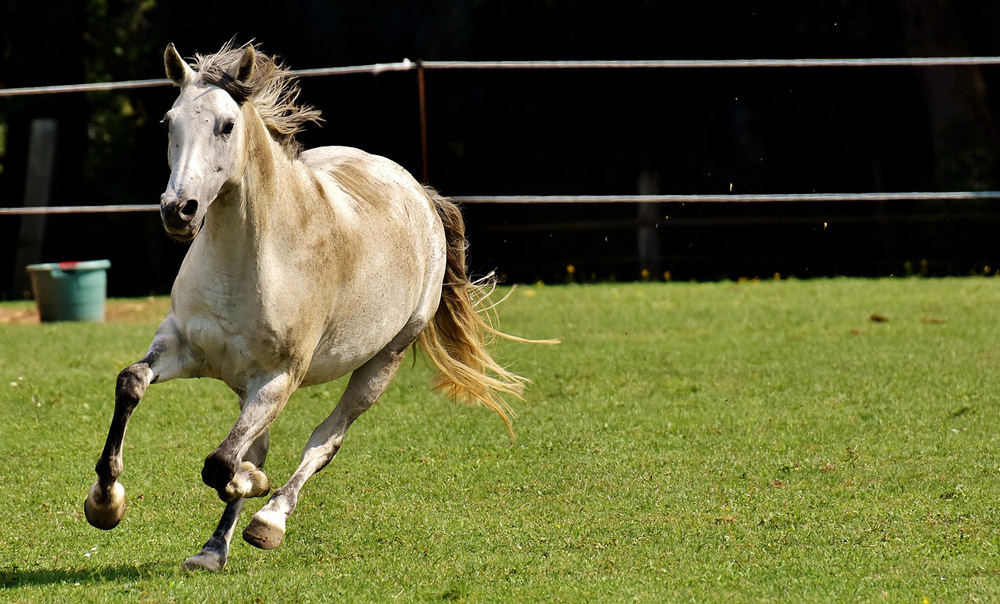Every horse owner agrees keeping a horse requires lots of responsibility. You have to deal with a myriad of chores on a daily basis. Besides, caring for horses is pricey. To make this process more rewarding and peaceful, we compiled the ultimate horse care guide that is perfect for beginners. Check these guidelines to make sure you’re ready to shelter a horse and take care of it.
Horse Care Basics
- Housing. Think over a place where you’re going to keep your horses. The more horses you have, the more space they’ll need. Your equines should feel comfy and protected at their home. This means horse owners take care not only of animals but of accommodation too.
- Daily routine. Horses require lots of stuff to be done. All of the cleaning, grooming, feeding, and watering require your daily attention. Make sure you’re ready to cover all the duties. Horses, like people, need a constant routine to keep them healthy and happy.
- Proper feed. Horses tend to have sensitive digestive systems. Their nutrition highly differs from people. That’s why horse owners must be aware of proper horse feeding. They should know what types of food are safe and healthy and avoid toxic products. They should also know how much food to give their horses according to their characteristics and needs.
- Constant grooming. Grooming is not just about beauty. It’s about keeping the equine healthy in a good condition. Grooming is a great chance to check your horse for injuries or wounds. Proper body brush tools must be used in order to provide safe grooming.
- Health care. One of the most important parts of owning a horse is tracking its well-being. A regular vet check is a must – check for contacts in advance. Besides, horsemen must understand the basics of equine anatomy. They should be able to recognize clear signs of various diseases and act respectfully. Keep a first aid kit at hand to provide essential emergency aid if needed. Apart from veterinarian visits, farrier checks are also a part of the routine. There’s an opportunity to invite the professional to your property or visit their place.
- Quality equipment. Special tools are designed to care for equines. Keep them in a good form and know how to use them properly. Moreover, there’s special tack gear that is used when riding horses. As well as riding equipment that is worth consideration.
As you can see, there are a lot of aspects to bear in mind when it comes to caring for the horse. Let’s get the nitty-gritty of the most important points.

Housing Your Horse
Arrange enough space for your horse. You need to have enough space on your property to shelter your equine. 1.5 to 2.0 acres of space is enough for the horse. There’s should be enough room for grazing, grooming, stabling as well as training. If you’re considering two horses, expand the territory to 2.5 to 3 acres. Anyway, all the animals should feel comfy and safe. Here’s a checklist of essentials that may help you when sheltering a horse:
- easy access to hay and water;
- opportunity to lie down, stand up, and stretch;
- comfy soft bedding on the floor in the stable;
- quick access to the shelter at any time;
- ability to graze at any time;
- the stables must be clean and disinfected;
- provide fresh air regularly;
- the stables must be horse-friendly;
- all the wires and cords must be anti-chew;
- all sharp things must be kept away from horses;
Check our horse barn safety rules to make sure the facility is ready to keep a horse.

Feeding and Watering Your Horse
Proper nutrition is a crucial point for equine’s well-being. Well-planned feeding promotes healthy aging and solid life expectancy. Like people have their preferences, the same goes for horses. Get the hang of safe horse food to avoid health problems.
The owner must provide their animals with a normal amount of food. This affects the overall body condition. Depending on the horse and its purpose, the feeding routine is different. But generally, the daily feed makes up 1.5-3% of the horse’s body weight. This includes hay, grain, fruits, and veggies.
Hay grabs the lion’s share of the horse feed – at least half of daily food. Large quantities of pasture grass and hay must be a daily component of the horse’s nutrition. Horses tend to graze throughout the day. Thus, easy access to hay is a must. In warm seasons, horses tend to graze outside on the paddock most of the time.
As for horse watering, it also should be provided daily. Make sure you frequently refresh the water to avoid insects get into it. In winter, an automatic horse waterer can be used so the water doesn’t freeze. In this case, the horse is able to access the trough around the clock.
Add some supplements and minerals to the diet. Install a salt block at the paddock. It will provide with necessary minerals that the equine’s body doesn’t produce. Such elements as sodium and chloride are vital for the digestion system and blood pH control.

Horse Grazing
Maintain the grazing pasture is another part of horse care. Some owners have their equines live outside all year round. Here are some handy tips on proper pasture management to consider.
- Arrange a shelter. Think over the shelter where your hooved friends can hide from bad weather conditions. An open-sided shed is a perfect option for warm seasons. It’s easy to build and budget-friendly. A run-in shed is an excellent option for cold days as it includes three walls and a roof. It will protect animals from wind, rain, and snow.
- Field maintenance. The grazing area must be cleaned regularly. Remove all the droppings and toxic plants.
- Restricted grazing. Restricted grazing is a common thing to keep the companion in shape. It also prevents laminitis from spreading. The grazing area is divided into several parts. While horses are grazing on one part, another paddock is resting and restoring its resources. Strip grazing is a usual way of grazing. A strip of the paddock is created and fenced with electric tape. The strip is shifted from time to time when the grass is run out of place. Another method is called starvation paddock. The idea is the same, but the grazing area has a shape of a small paddock instead of a strip.
- Grass maintenance. Make sure the equines get enough grass all over the year. You may need to supply extra grass in winter. Consider a rotational paddock system as one of the most popular solutions. It will allow you to regrow the grass gradually.
- Fence installation. Fencing a grazing area must be planned in advance. Use quality materials that are horse-friendly. Fencing a horse functions as a shelter that will last for years keeping your equine safe and protected. Wooden posts are the best option. If you crave more budget-friendly ideas, electric wiring with posts is a good one. Make sure there are no sharp edges to hurt the horse (like with a barbed wire). Check all the gaps so the horse can’t get its hoof stuck. Another feature to keep in mind, the fence must be high enough to avoid the horse jumping out.

Horse Health Care
Basic knowledge of equine anatomy is required when owning a horse. Look for local professionals that will provide you with all the necessary service.
Vet Checks
Dental Care
The teeth must be checked at least once a year. The teeth in a poor condition may become sharp and cause pain to the horse. Equines at the age of 5 and above have to be checked more frequently – every 3 to 6 months. The same goes for grain-fed equines.
Deworming
Check the horse’s stomach to avoid worms spreading. Arrange a deworming plan with your vet, which is individual to every horse. You may be recommended using worming pastes every 6 to 8 weeks. Check the directions on the product to follow the instructions.
Vaccination
Vaccination is another regular routine that could be recommended. If you have a question about the horse’s diseases and whether they needed vaccination, contact your vet immediately.
Overall Check
When visiting a veterinarian, a full-check is a good way to understand the horse’s state of health. The body condition will be examined including weight, coat, and more.

Farrier Checks
Look for a farrier in case your horse needs shoeing and trimming. It’s an essential part of horse care that mustn’t be neglected. The farrier prices are different all over the country.
Shoeing
Depending on your horse’s health and purpose, there are different solutions for shoeing. A set of shoes are usually changed every 6 weeks. A competition horse may need more regular shoeing while a rarely ridden equine can get new shoes every 8 weeks.
Trimming
Trimming the horse’s foot promotes healthy hoof care. Lots of owners pay the farrier to get the hooves trimmed. The hooves should be trimmed every 6 to 8 weeks. The hoof balance affects the horse’s proper movement and comfy living. Thus, trimming and shoeing must be provided by a professional who has a solid knowledge of equine anatomy.

Horse Tack and Equipment
There’s a wide range of gear that is used to tack up the equine and ride on it. Lots of sizes and designs are available to outline the strength and majesty of horses.
Basic Horse Tack
- saddle;
- saddle pad;
- cinch (girth);
- bridle;
- blanket (sheet);
- bit;
- protective boots;
- horseshoes;
- grooming kit.
Basic Riding Equipment

Slay Horse Care Like a Pro
Owning a horse is a challenging subject that requires lots of time and effort. The process could be more delightful when you plan the duties. Get all the questions answered with the ultimate horse care guide. This overview describes essentials that you have to keep in mind when caring for equines. Use this guide to nail horse daily care and enjoy your companion to the fullest.
